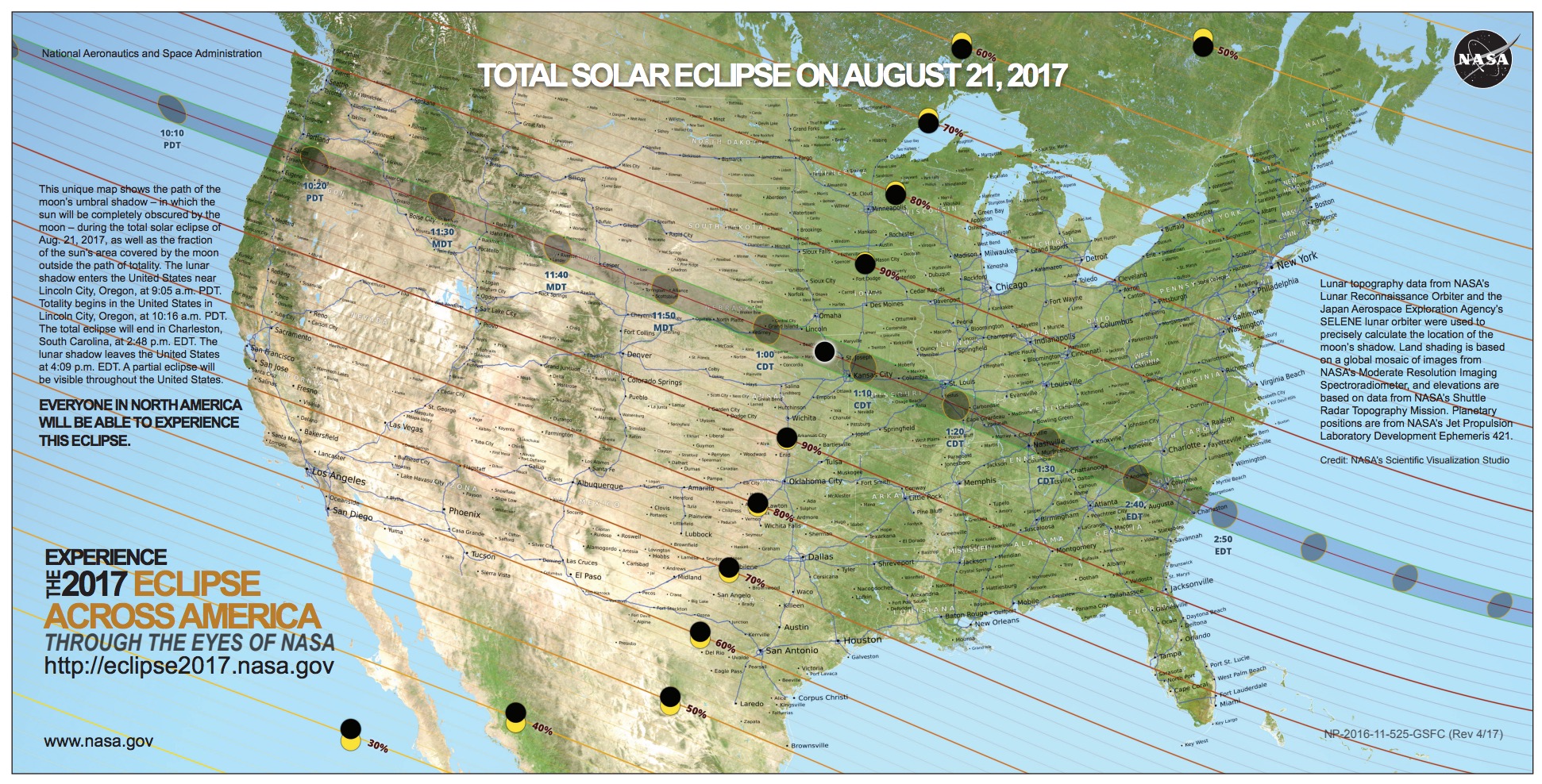NATIONAL INFORMATION LINKS
2017 Solar Eclipse – Transportation Fact Sheet for State and Local Departments of Transportation
What: 2017 Solar Eclipse
Why: A rare planned special event for which State and local Departments of Transportation (DOT) should prepare? Think of it as:
- A planned special event for which there has been no recent precedent in the United States.
- A planned special event that is a feat of nature and not man-made.
- A planned special event with many different events across the country.
- An act of nature that is not a disaster.
When: Monday, August 21, 2017
Where: Refer to Figure 1 map.
Who: Approximately 200 million people (a little less than 2⁄3 the nation’s population) live within a day’s drive of the path of this total eclipse.
Why the Fact Sheet: To make you aware of the 2017 eclipse; to provide the link for events and festivals in your state to celebrate the event, and if appropriate, to provide information should your state need to develop transportation plans. Read more
National Operations Center of Excellence – 2017 Solar Eclipse
The National Operations Center of Excellence is coordinating resources for the Total Solar Eclipse taking place on August 21, 2017. The path of totality will cover 14 states West to East across the country, however, the eclipse will be visible and have an effect on the entirity of the contiguous 48 states. We recommend you watch both our 2017 Total Solar Ecllpse Webinar for a fantastic overview of Total Eclipse and our Solar Eclipse Planning and Preperation One Month Out: Communications, Emergency Management, and Travel Estimates.
In the path of totality, special events will be the major challenge for transportation operators. But the effects of darkness and unusual travel patterns will affect the transportation network in every state. Read more
NASA Main Site for Eclipse 2017
On Monday, August 21, 2017, all of North America will be treated to an eclipse of the sun. Anyone within the path of totality can see one of nature’s most awe inspiring sights – a total solar eclipse. This path, where the moon will completely cover the sun and the sun’s tenuous atmosphere – the corona – can be seen, will stretch from Salem, Oregon to Charleston, South Carolina. Observers outside this path will still see a partial solar eclipse where the moon covers part of the sun’s disk. NASA created this website to provide a guide to this amazing event. Here you will find activities, events, broadcasts, and resources from NASA and our partners across the nation. Read more
National Park Service – 2017 Solar Eclipse
No matter where you go, plan ahead. People have been planning where they want to view the eclipse years in advance. As a result, lodging and camping around many parks in the path of the total eclipse are full. It’s hard to estimate how busy parks will be, but planning ahead will help make the experience unique and enjoyable. Here are some things to consider:
- Protect your eyes. Bring your eclipse glasses. You don’t want to arrive and discover the local stores are all sold out. The eclipse will be amazing, but it’s not worth your eyesight. Learn more about safely viewing the eclipse.
- Driving. Get there early; parking could be scarce.
- Pack a picnic. Snacks, water, and a lunch will help make waiting for the big event enjoyable. Read more
…
Please follow these tips to drive safely on the day of the solar eclipse:
- Don’t stop along the interstate or park on the shoulder during the event.
- Exit the highway to safe location to view and/or photograph the eclipse.
- Don’t take photographs while driving!
- Don’t try to wear opaque eclipse glasses while operating a vehicle.
- Turn your headlights on — do not rely on your automatic headlights when the eclipse blocks out the sun.
- Watch out for pedestrians along smaller roads. People may be randomly parking and walking alongside the roadside in the hours around the eclipse to get the best view.
- Prepare for extra congestion especially on the interstates in the path on the day before, day of and day after the eclipse.
- Avoid travel during the eclipse or in the area of the main path if you can.
View original post (FHWA.gov): Total Solar Eclipse – August 21st, 2017 – Transportation Information
Tags: Eclipse, Eclipse 2017, Federal Highway Administration, FHWA, Solar Eclipse, The Great American Eclipse, Total Eclipse







 RSS Feed
RSS Feed